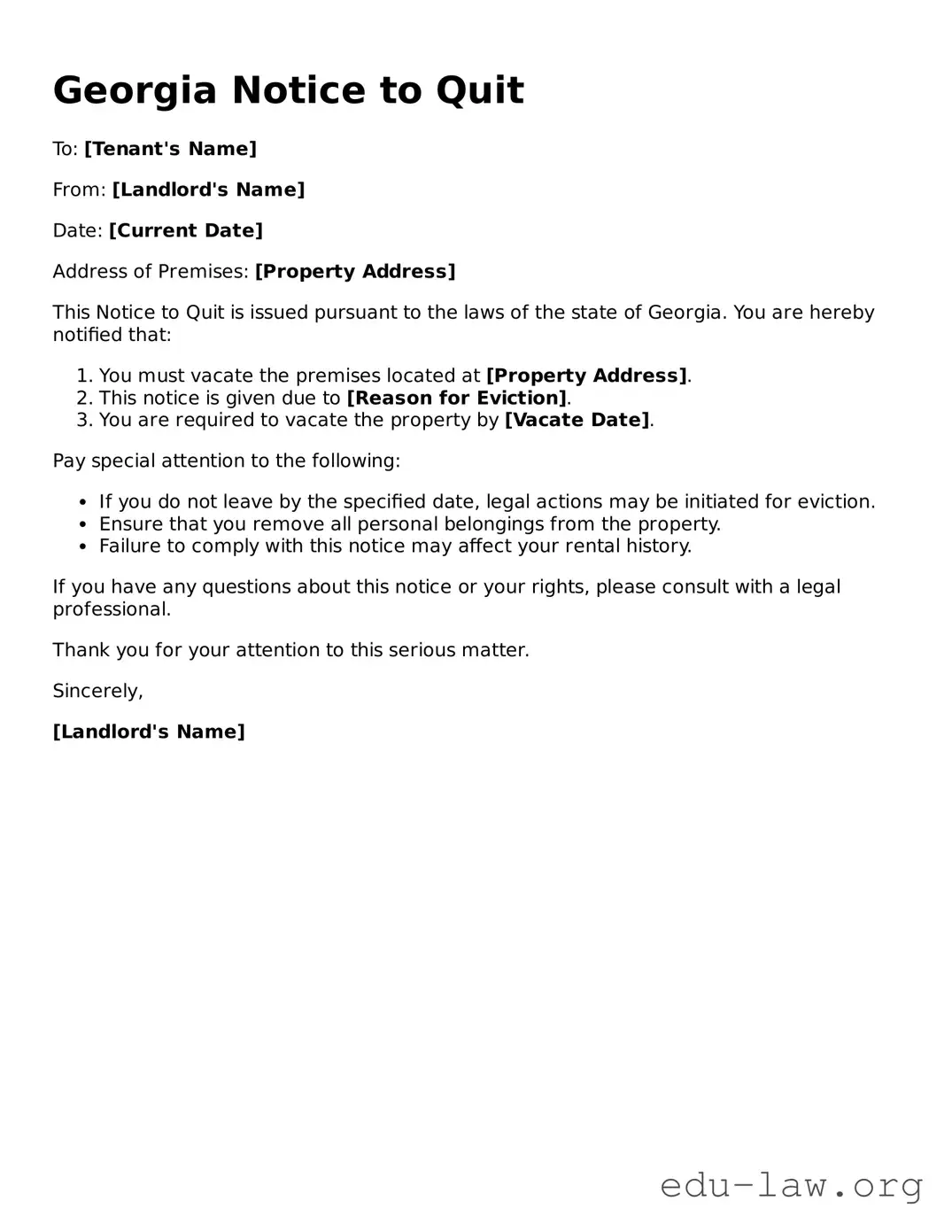What is the Georgia Notice to Quit form?
The Georgia Notice to Quit form is a legal document that a landlord uses to notify a tenant to vacate the rental property. This notice is typically employed when a tenant has violated the terms of their lease agreement or is behind on rent. It serves as an official communication that the landlord intends to pursue eviction if the tenant does not leave the premises by a specified date.
When should a landlord issue a Notice to Quit?
A landlord should issue a Notice to Quit when a tenant has defaulted on their rental obligations, such as failing to pay rent or violating other lease terms. The specific grounds for eviction will dictate the timing. For non-payment of rent, a notice should generally be sent after the rent is late, while for lease violations, it may be sent once the violation is identified.
How much time must a tenant be given to vacate the property?
The amount of notice required can vary based on the reason for the Notice to Quit. If the notice is related to non-payment of rent, tenants typically receive a seven-day notice to cure the default or vacate. For lease violations, the notice period may differ, so it’s crucial to understand the specific rules that apply based on the nature of the violation.
What information must be included in a Notice to Quit?
A Notice to Quit should clearly state the reason for the notice, whether that's non-payment of rent or a lease violation. It must also include a deadline by which the tenant needs to vacate the property. Additional details such as the date the notice is served and the specific terms of the lease that were violated can enhance clarity.
Is a Notice to Quit necessary before filing for eviction?
Yes, in Georgia, issuing a Notice to Quit is generally a necessary step prior to pursuing eviction proceedings. Failing to provide this notice may result in complications during the eviction process, as the court could view the landlord’s actions as premature or not in compliance with the required legal procedure.
Can a tenant respond to the Notice to Quit?
While a tenant cannot formally "respond" to a Notice to Quit as it is predominantly a notification, they do have the opportunity to rectify the issues. For instance, if the notice involves non-payment of rent, tenants can pay the overdue amount to avoid eviction. Addressing any lease violations prior to the posted deadline is also advisable.
What happens if a tenant ignores the Notice to Quit?
If a tenant ignores the Notice to Quit and does not vacate the premises by the deadline, the landlord may proceed with filing an eviction lawsuit, also known as a dispossessory action. The court will then review the case and can issue a ruling that may lead to the tenant being forcibly removed from the property if the eviction is granted.
Where can someone find the Georgia Notice to Quit form?
The Georgia Notice to Quit form can often be found through various online legal resources or at local courthouses. Additionally, some landlords may choose to consult with a legal professional to ensure that the form complies with all relevant laws and regulations specific to their situation.
